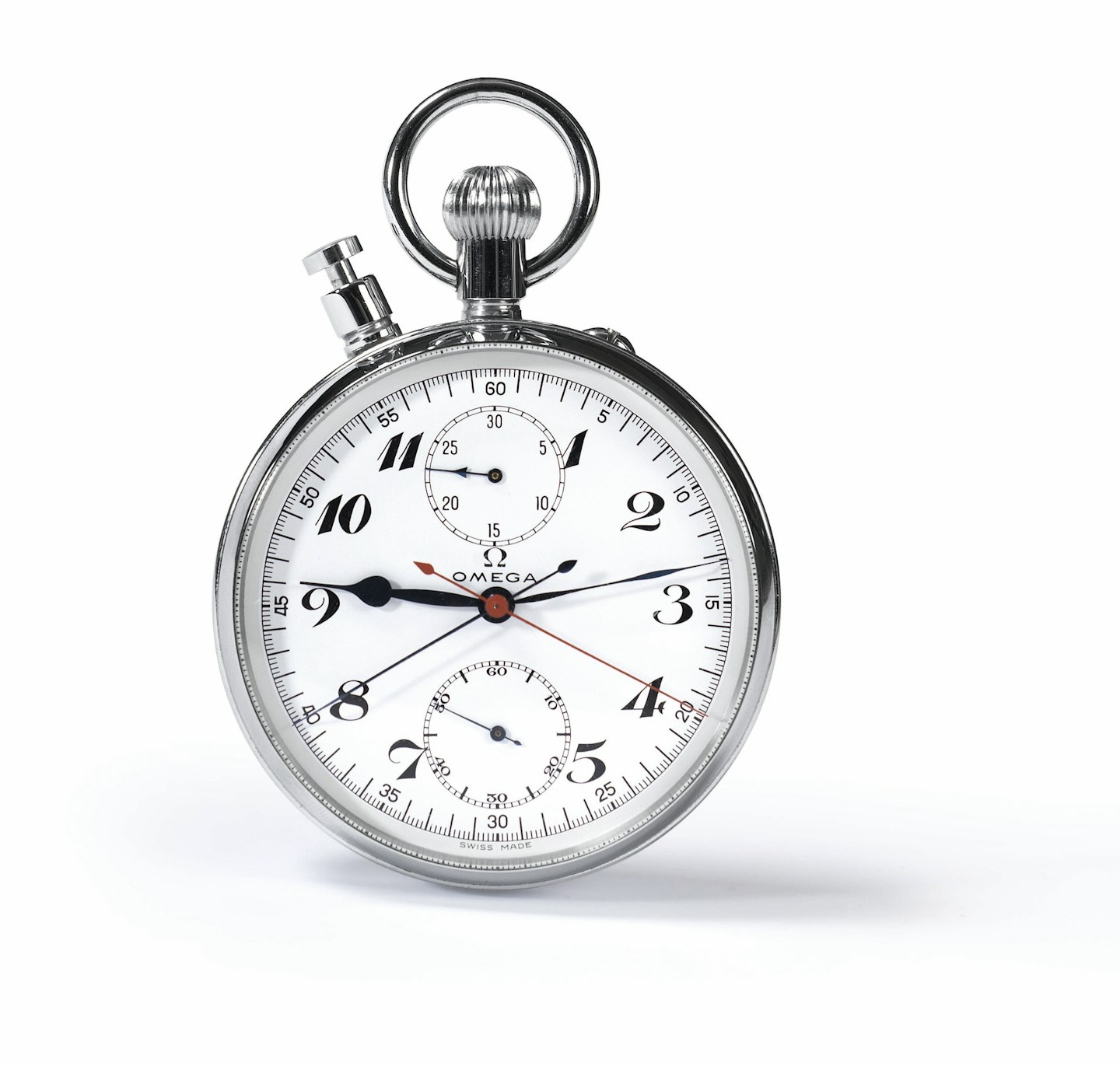British swimmer Adam Peaty missed out on a gold medal in the 100m breaststroke race by 0.02 seconds. Australian Ariarne Titmus defeated two former world record holders in the 400m freestyle with a gold-medal winning time of 3:57.49 – just ahead of Canadian Summer McIntosh’s silver time of 3:58.37. These are usually the type of stats that only mathematicians would obsess over. But in the Olympics, we all suddenly care.
Lucky then, that in a competition where years of training and toil are decided in a flash, there are expert timekeepers on hand. Swiss luxury watch brand Omega have been the official timekeeper of the Olympics since 1932. Over that period, they’ve evolved with the Games, from a place where ski races were decided by the competitor putting a slip of paper with the time he set off in his pocket at the top of the mountain and Omega timekeepers deducting it from the time they recorded him crossing the finish line to work out the winner. These days, Omega have invented pads that Olympic climbers can touch themselves to end their race and record their time when they reach the summit and lights that flash for Paralympians who might struggle with hearing a starting buzzer to know when to set off for a race.
Innovations like these are years in the making, with a team at Omega working hand in glove with the International Olympic Committee – and athletes themselves – to focus on competitions where they can help capture data even more efficiently. Omega CEO Raynald Aeschlimann, is particularly proud of the impact his team had on swimming. ‘Swimming was always a big issue, because our role as timekeepers is keeping the time but also providing the information to the judges so they can decide. In the 1960’s swimmers said there were things that needed to change,’ he recalls. The solution? A touchpad in the pool so that swimmers could end their race themselves. The technology is commonplace in swimming these days and works so well that it’s now being introduced for climbing too, where athletes can touch the pad at the top of the summit to finish.

Climbing was added to the Olympic schedule in Tokyo 2020. Aeschlimann says ‘the new sports are sometimes a challenge because they’re incredibly popular but niche,’ but that Omega are always looking for ways to improve the Games.
For Paris 2024, they have introduced a new Scan O’Vision photo finish camera, which can capture up to 40,000 digital images per second. Thanks to the integrated AI technology, Aeschlimann says these cameras will be instrumental in helping gather data about key events to inform the judges decisions – and showcase the athletes performance to the public. ‘We’re going to be able to reproduce the diving jump, plus the distance and speed when they get into the water.’
It will also help in events where you might not expect to need a photo finish, but Olympic history would prove otherwise. He cites the 2012 London Olympics, when the Women’s triathlon – a competition that involves swimming, cycling and running legs – ended with Sweden’s Lisa Norden and Switzerland’s Nicola Spirig crossing the finish line at exactly the same time, an epic 1:59:48. Initially, no one was sure who’d won but the photo finish technology was able to eventually reward Spirig with the gold medal.

When the stakes are so high, it’s perhaps not surprising that Aeschlimann says cyber security has been the biggest challenge of these 2024 Games. ‘Most of the sport we’ve been testing, and we’ve been using for years, but now we’ve been adding so much security. Where we’ve had the most challenge is in preventing cyber-attacks.’
So far, though, so good. By the Paris 2024 Closing Ceremony, Omega will have measured 1.3 million data points. All with a single purpose. ‘We’re trying everywhere to find the best way to profile and highlight the performance,’ says Aeschlimann. ‘And also at the same time to time it accurately. That’s our mission.’ Let’s hope it also helps land Team GB with a few more medals to bring home…
